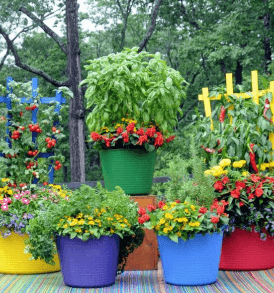GardSuccessful garden growth depends on healthy soil although many people choose seeds plants and fertilizers over this fundamental need. Most gardeners fail to understand that soil is not merely a growing medium – it functions as an active ecosystem that drives plant health alongside productivity. People with plain dirt in their soil should not fret. When you apply proper care and basic understanding, you can develop soil quality, which enhances plant health. The following discussion examines steps to activate your soil while achieving superior gardening results.
Understanding the Difference between Dirt and Soil
Soil and dirt present two distinct entities although people often confuse them. Plants require alive components and essential nutrients along with structural elements to grow properly so dirt falls short. Soil exists as a living body that incorporates organic matter together with minerals alongside water and air along with its associated microorganism community. The proper functionality of plant-supporting soil depends on maintaining its equilibrium.
Soil health deteriorates after periods of excessive use or erosion or neglect since depletion leaves the ground compacted and without essential nutrients. Identifying poor soil conditions stands as the starting point for soil revival efforts. The symptoms of poor soil include short plants with drain issues or missing earthworms and helpful microbes.
Composting: Turning Waste into Black Gold
Adding compost remains one of the simplest and most efficient solutions to restore dead soil. Industrial waste including fruit peels together with yard clippings and coffee grounds that go through composting processes create nourishing materials benefiting soil health.
The addition of compost to your garden improves both soil structure and water retention abilities while providing essential plant nutrients. Setting up home composting requires combining nitrogen-heavy kitchen scraps with carbon-heavy garden waste including dried leaves. Your plants adore the dark crumbly substance produced through the breakdown of these materials over time.
Mulching: Nature’s Protective Blanket
An essential means of soil revival comes from adding mulch to the mix. Organic mulch, such as straw, wood chips, or shredded leaves, acts as a protective blanket for the soil. As it ages in the soil mulch controls temperatures and preserves moisture, while killing weeds and releasing nutrients through breakdown.
Plant mulching serves two essential purposes: it enhances soil quality and cuts down both watering and weeding requirements. Practice proper mulch selection for your plants then distribute it equally yet preserve space between stems to prevent stem rot.
Inviting Beneficial Microorganisms
Healthy soil develops from dirt through the actions of microorganisms, which belong to the soil microbiome. Organisms in the microbiome break down organic materials while they distribute nutrients across ecosystems and protect plant health.
Soil microbiome development requires avoidance of chemical fertilizers and pesticides because these products harm beneficial organisms. You should adopt organic agricultural methods that incorporate compost addition together with crop cover planting as well as crop rotation principles to nurture your soil biodiversity.
Regular Soil Testing for Continued Success
You should frequently test your soil to verify your gardening investments are successful. With soil, testing you can learn about your soil’s pH levels and nutrient content and general condition, which reveals its specific needs. Using lime or gypsum or organic fertilizers can fix soil deficiencies so plants receive their ideal growth environment.
Your Garden Starts with the Soil
Turning unproductive ground into living terrains requires persistent time investment and physical effort although the outcome makes the process worthwhile. Buy enhancing the drainage of carbon the soil achieves environmental sustainability through creating vibrant plants while retaining water.
For a deeper dive into soil science and practical gardening tips, check out Soil Science for Beginners. This book provides step-by-step guidance on improving soil health, making it an essential resource for gardeners of all levels. Start your journey to healthier soil and a thriving garden today!

